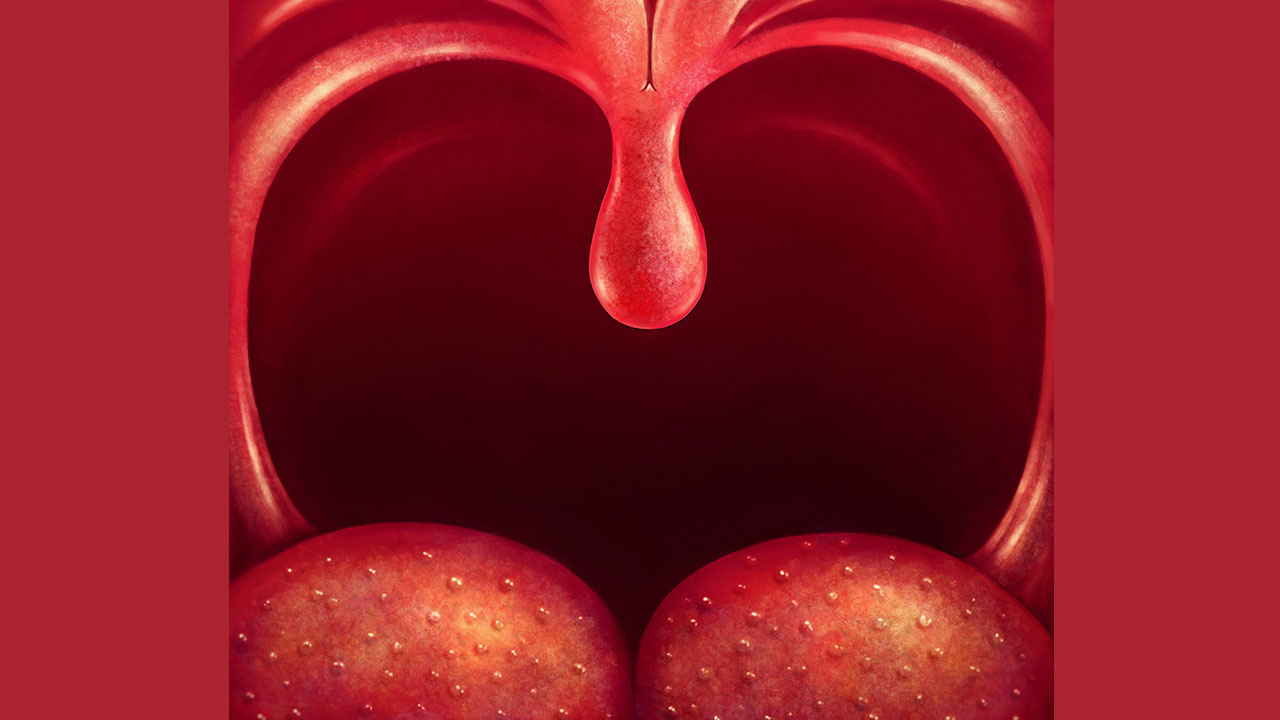
What Does Your Uvula Do?
The palatine uvula, otherwise known as the uvula, is the teardrop-shaped piece of soft tissue that hangs down from the roof of your mouth. It is part of the soft palate. The uvula is made from small amounts of thin connective tissue, saliva-producing glands, and muscle tissue. When you eat, your soft palate and uvula are pushed backwards to prevent foods and liquids from going up your nose. It also prevents choking by triggering the gag reflex if large amounts of food or a large object is passed to the back of the throat.
Uvulitis occurs when the uvula becomes swollen, leading to a sore throat. There are several causes for a swollen uvula to include dehydration, smoking, allergic reaction, or from a virus or bacterial infection such as strep throat. Home remedies for a swollen uvula include hydration, Benadryl, and antibiotics in the case of a bacterial infection.
Nearly 50% of adults snore potentially causing poor sleep for both the person snoring and the bed partner. Some people need to have their uvula removed to treat snoring or some of the symptoms of obstructive sleep apnea (OSA). When you sleep, your uvula vibrates. If you have an especially large or long uvula, it can vibrate enough to make you snore. In other cases, it can flap over your airway and block the airflow into your lungs, causing OSA. Removing the uvula can help prevent snoring. It may also help symptoms of OSA. Often, the uvula is partially removed as part of uvulopalatopharyngoplasty (UPPP). This is the main surgery used to clear the blockage in OSA. UPPP removes excess tissue from the uvula and soft palate.
Uvulectomy can performed in your doctor’s office. You will get both a topical and injected local anesthetic in the back of your mouth to prevent you from feeling pain. To do an uvulectomy, your doctor will use radiofrequency energy or an electric current to remove your uvula. The whole procedure takes about 5 to 10 minutes. For UPPP, they will use small cuts to remove extra tissue from the soft palate opening the airway even further.
Have Questions?
Fill out this short form and an expert from Capital ENT will get back to you.
What happens after the procedure?
You may feel some pain in your throat for few days after the procedure. In addition to any pain medication your doctor prescribes, sucking on ice or drinking cool liquids can help soothe your throat. Try to only eat soft foods for the next three to five days to avoid irritating your throat. Avoid hot and spicy foods.
Does uvula removal have any side effects?
Following the procedure, you might notice some swelling and rough edges around the surgical area for a few days. A white scab will form over the place where your uvula was removed. It should disappear in a week or two. Changes in swallowing or speech do not occur with uvulectomy.
It takes about three to four weeks to fully heal after an uvulectomy. But you will likely be able to go back to work or other activities within a day or two of the procedure.
Uvula removal may be an option if you snore because of a very large uvula, or you have OSA that is mainly caused by an enlarged uvula. The procedure only takes a few minutes, and recovery is fairly quick. The physicians at Capital ENT and Sinus Center are specialty trained in snoring and obstructive sleep apnea and can help decide of uvulectomy is an appropriate procedure to treat your disruptive snoring.
